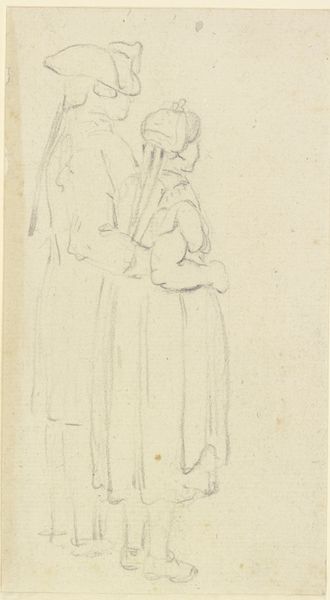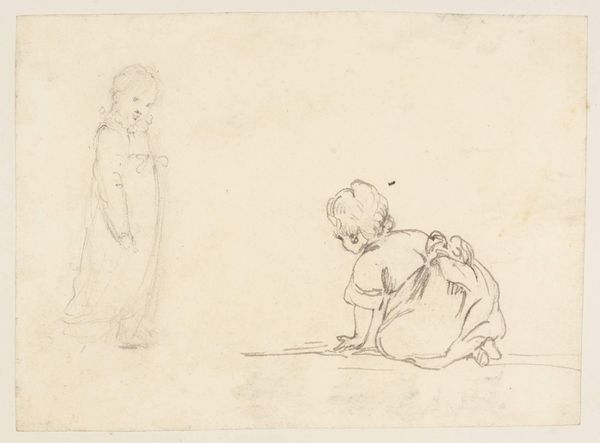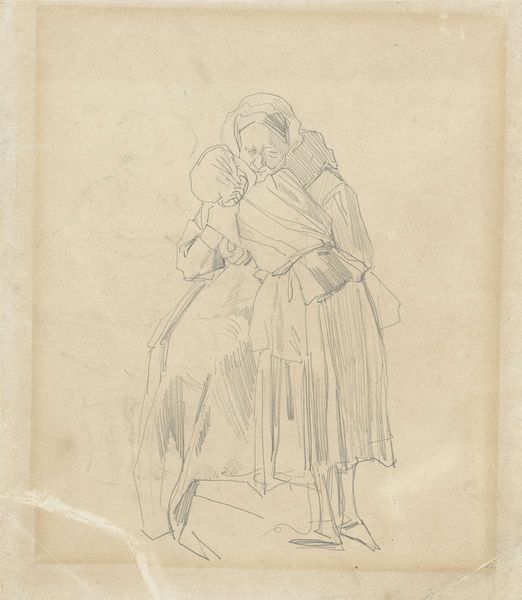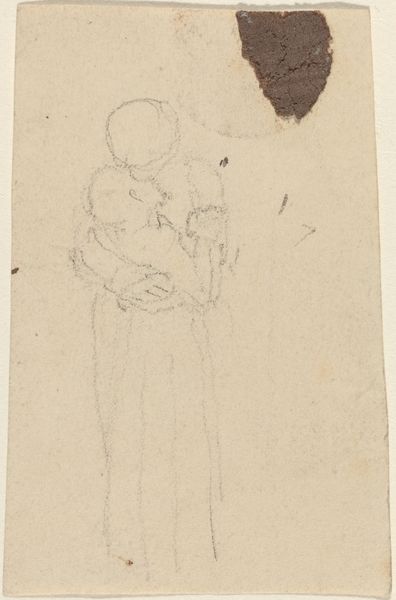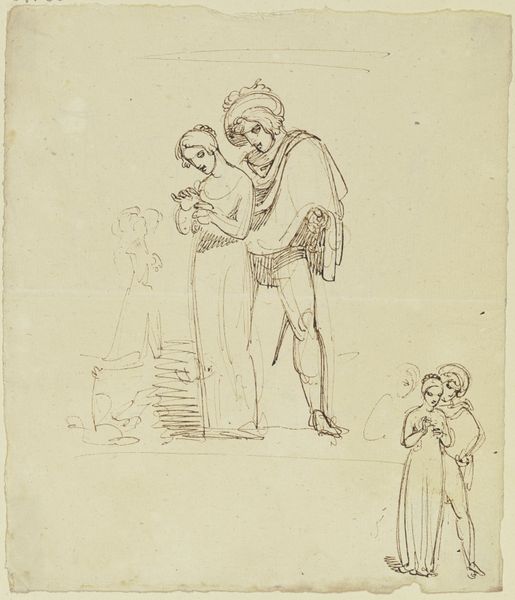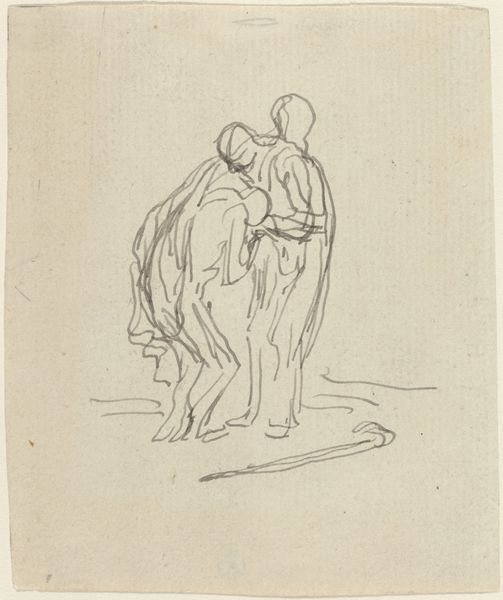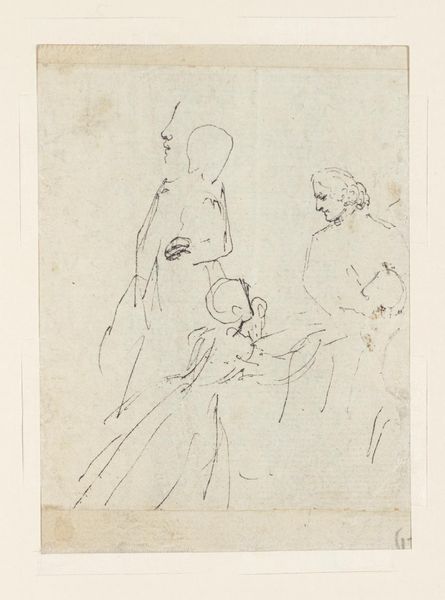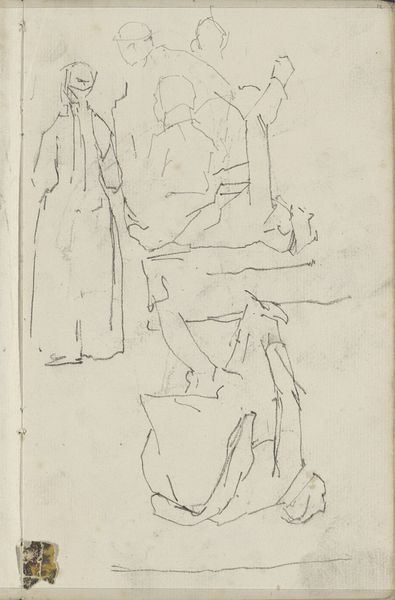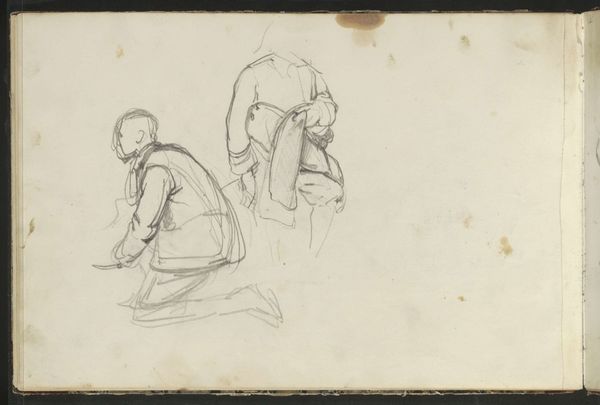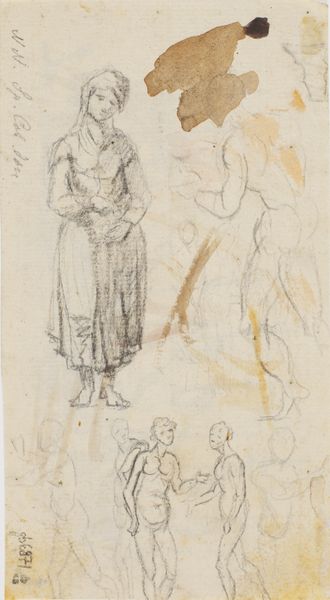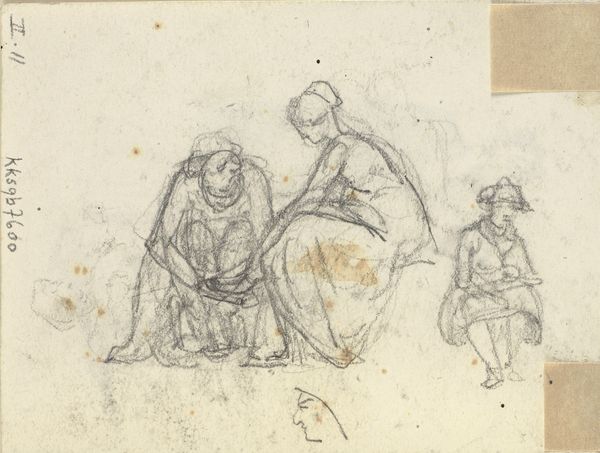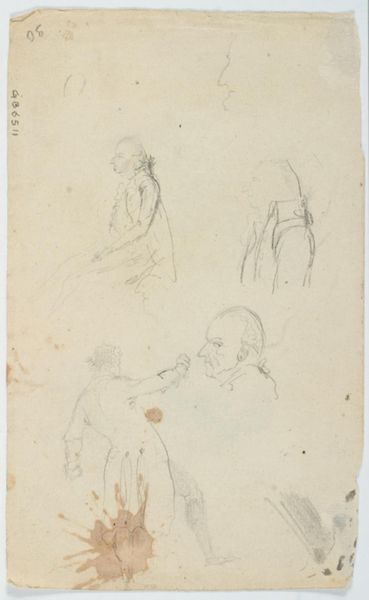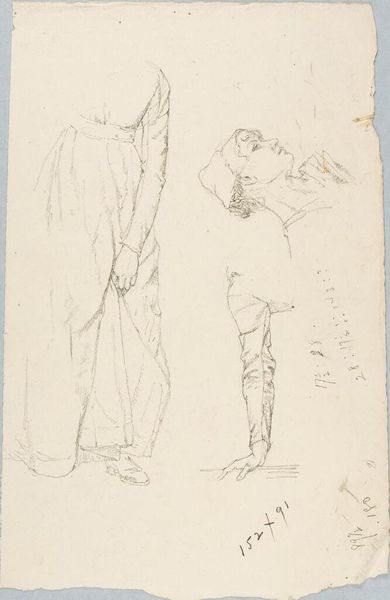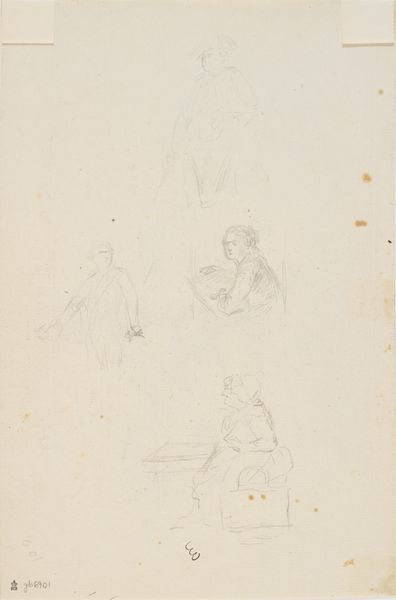![Study for "Mary Cassatt at the Louvre" [verso] by Edgar Degas](/_next/image?url=https%3A%2F%2Fd2w8kbdekdi1gv.cloudfront.net%2FeyJidWNrZXQiOiAiYXJ0ZXJhLWltYWdlcy1idWNrZXQiLCAia2V5IjogImFydHdvcmtzLzdkMWEyOTAxLWIyZmEtNDVjZS1hYmRlLTYyZDAwMjNmMmM4NS83ZDFhMjkwMS1iMmZhLTQ1Y2UtYWJkZS02MmQwMDIzZjJjODVfZnVsbC5qcGciLCAiZWRpdHMiOiB7InJlc2l6ZSI6IHsid2lkdGgiOiAxOTIwLCAiaGVpZ2h0IjogMTkyMCwgImZpdCI6ICJpbnNpZGUifX19&w=3840&q=75)
drawing, pencil
#
portrait
#
drawing
#
impressionism
#
figuration
#
pencil
Dimensions: overall: 32.3 x 24.5 cm (12 11/16 x 9 5/8 in.)
Copyright: National Gallery of Art: CC0 1.0
Curator: Here we have Edgar Degas’s "Study for 'Mary Cassatt at the Louvre'" from around 1879. It’s a pencil drawing, revealing his working process. Editor: There’s an unfinished quality to it, a ghostly feeling. The two figures seem caught in a moment of contemplation, almost like fleeting memories rather than solid forms. Curator: Precisely! The study is linked to Degas's painting depicting Mary Cassatt in the Louvre. What strikes me is how Degas is examining not just Cassatt's physical appearance, but her engagement with art within that institutional space. He's sketching her from the back, emphasizing the viewer-artwork relationship. Editor: Right, it brings forward complex questions about spectatorship and gender in the art world. Cassatt, a woman artist herself, is placed as a viewer within the patriarchal structure of the Louvre. It makes you wonder about her perspective, and her potential subversion of those structures through her own artistic practice. The sketches look very nonchalant but speak volumes about the gaze and positionality. Curator: Absolutely, and it's important to remember that Degas himself was a complex figure, often criticized for his problematic depictions of women. Showing Cassatt from the back could be interpreted in many ways – perhaps as an attempt to avoid objectification, or perhaps another form of control over her image. We should not ignore the power relations at play, especially regarding how women artists gained recognition within male-dominated circles. Editor: Yes, it invites speculation about collaboration, competition, and even appropriation. Their friendship, fraught with its own tensions, shaped how they saw each other. What seems to me most interesting is thinking about how women navigated, critiqued, and eventually redefined art spaces such as museums. Curator: Thinking about this drawing through that historical context reveals a very rich tapestry of artistic creation, gender dynamics, and institutional power. It becomes far more than a preliminary sketch. Editor: This image reveals just how loaded representations of gendered subjectivity within the arts were, and possibly remain. It makes me question what power dynamics subtly persist even today.
Comments
No comments
Be the first to comment and join the conversation on the ultimate creative platform.
